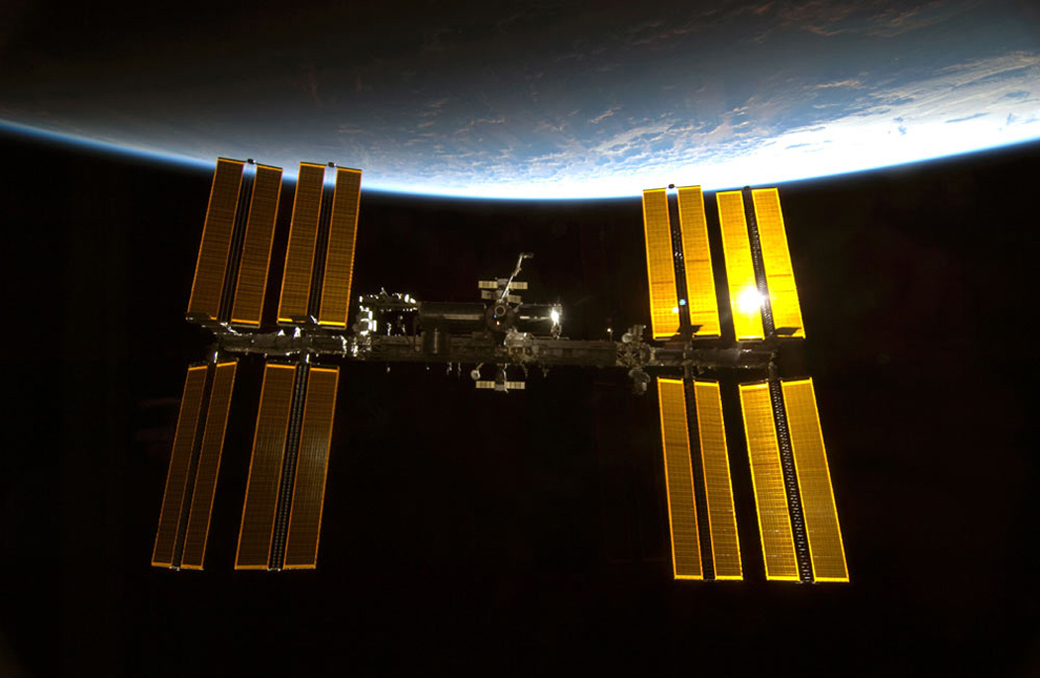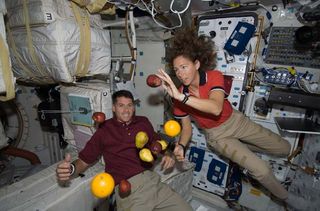Is a 1-Year Space Station Mission in the Works?

A Russian report this week claimed that an American and a Russian will launch on a one-year trip to the International Space Station in 2015. But NASA says the endurance space mission is just an idea, for now.
The short news story Wednesday (Aug. 22) by Russia's Interfax news agency cited an unnamed source within Russia's Federal Space Agency (Roscosmos) to state that the marathon space station flight, which would be twice as long as typical six-month trips, will launch in three years and feature a two-person crew.
But NASA officials say not so fast. Nothing, they say, has been decided yet.
"We are exploring the idea of a one-year increment as part of preparations for exploration beyond low-Earth orbit," NASA spokesman Kelly Humphries of Johnson Space Center in Houston told SPACE.com. "But the discussion is very preliminary and no official decisions have been made." [Most Extreme Human Spaceflight Records]
If a one-year stay aboard the International Space Station is actually in the works, it could help lay the foundation for even more ambitious human spaceflight efforts down the road. President Barack Obama has challenged NASA to develop new spacecraft and technology in order to send astronauts to visit a nearby asteroid by 2025, and ultimately on to Mars in the 2030s.
A roundtrip journey to Mars, according to some mission concepts, would take about two years to complete. So a one-year stint on the International Space Station would allow scientists a chance to observe some of the longer-term effects of spaceflight beyond what crews have reported to date.

In fact, a one-year trip into space has actually been done before.
Get the Space.com Newsletter
Breaking space news, the latest updates on rocket launches, skywatching events and more!
In the mid-1990s, Russian cosmonaut Valery Polyakov, a medical doctor, spent nearly 438 consecutive days in space during a marathon mission aboard the Mir Space Station. The mission began in January 1994 and ended in March 1995.
While Polyakov's endurance space trial helped researchers study the long-term physiological effects of human spaceflight, Russia has also had a keen interest in the psychological impact of spending such a long period away from Earth.
Last year, six volunteers representing Russia, Europe and China completed a staggering 520-day Mars mission simulation that aimed to recreate the isolation and mental stress of long-term spaceflight. That simulation, called the Mars500 mission, began in June 2010 and ended in November 2011.
The International Space Station is currently home to six crewmembers representing three different countries. The station's Expedition 32 crew includes three Russians, two Americans and a Japanese astronaut.
NASA, Russia and the space agencies of Canada, Europe and Japan built the $100 billion space station over more than decade. Construction began in 1998, with another Russian lab due to arrive at the station next year. A total of 15 different countries have participated in the station's construction.
You can follow SPACE.com Managing Editor Tariq Malik on Twitter @tariqjmalik and SPACE.com on Twitter @Spacedotcom. We're also on Facebook & Google+.
Join our Space Forums to keep talking space on the latest missions, night sky and more! And if you have a news tip, correction or comment, let us know at: community@space.com.

Tariq is the Editor-in-Chief of Space.com and joined the team in 2001, first as an intern and staff writer, and later as an editor. He covers human spaceflight, exploration and space science, as well as skywatching and entertainment. He became Space.com's Managing Editor in 2009 and Editor-in-Chief in 2019. Before joining Space.com, Tariq was a staff reporter for The Los Angeles Times covering education and city beats in La Habra, Fullerton and Huntington Beach. In October 2022, Tariq received the Harry Kolcum Award for excellence in space reporting from the National Space Club Florida Committee. He is also an Eagle Scout (yes, he has the Space Exploration merit badge) and went to Space Camp four times as a kid and a fifth time as an adult. He has journalism degrees from the University of Southern California and New York University. You can find Tariq at Space.com and as the co-host to the This Week In Space podcast with space historian Rod Pyle on the TWiT network. To see his latest project, you can follow Tariq on Twitter @tariqjmalik.









